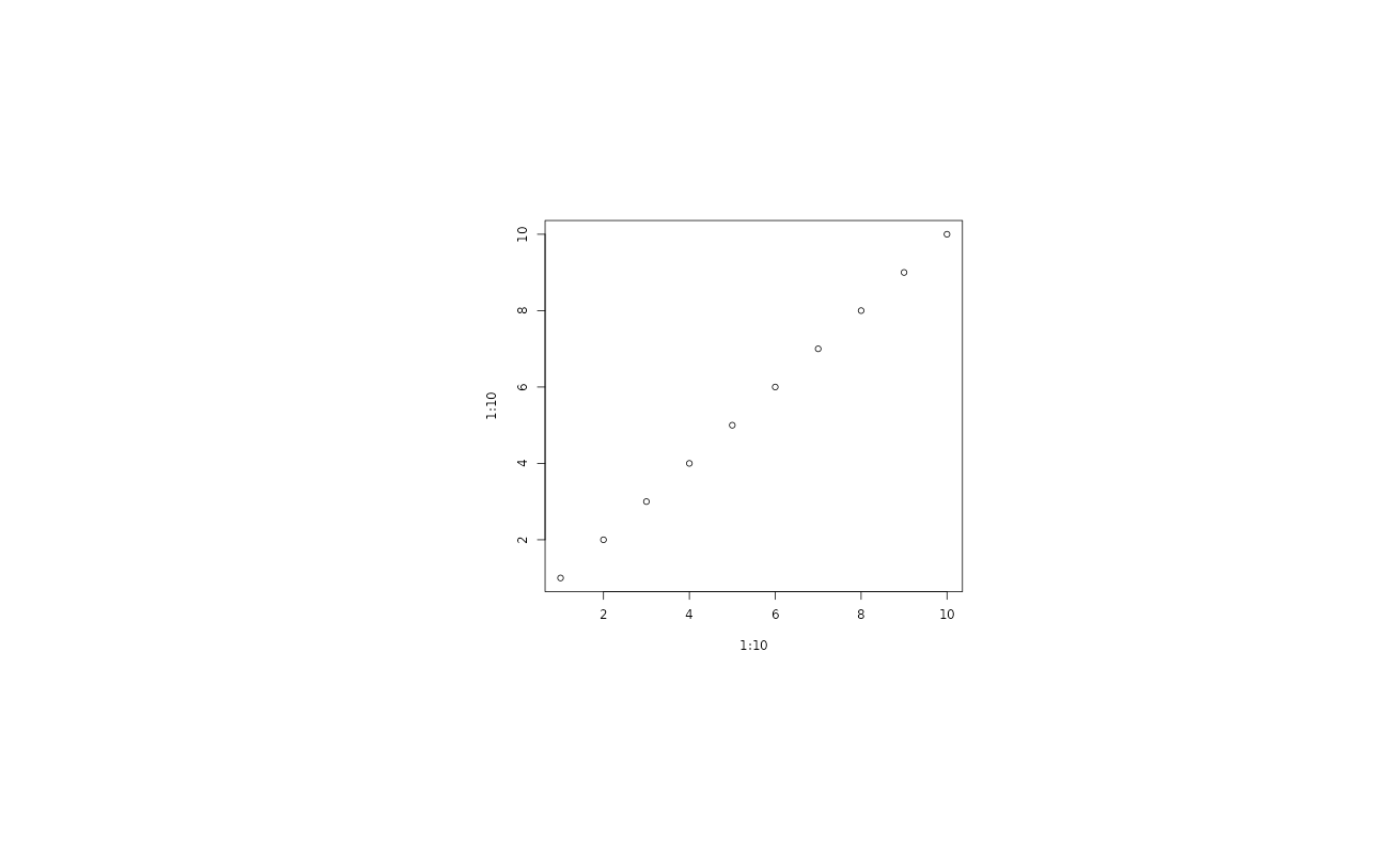Usually the point of using a graphic device is to create a file or show the
graphic on the screen. A few times we need the image data for further
processing in R, and instead of writing it to a file and then reading it back
into R the agg_capture() device lets you get the image data directly from
the buffer. In contrast to the other devices this device returns a function,
that when called will return the current state of the buffer.
Usage
agg_capture(
width = 480,
height = 480,
units = "px",
pointsize = 12,
background = "white",
res = 72,
scaling = 1,
snap_rect = TRUE,
bg
)Arguments
- width, height
The dimensions of the device
- units
The unit
widthandheightis measured in, in either pixels ('px'), inches ('in'), millimeters ('mm'), or centimeter ('cm').- pointsize
The default pointsize of the device in pt. This will in general not have any effect on grid graphics (including ggplot2) as text size is always set explicitly there.
- background
The background colour of the device
- res
The resolution of the device. This setting will govern how device dimensions given in inches, centimeters, or millimeters will be converted to pixels. Further, it will be used to scale text sizes and linewidths
- scaling
A scaling factor to apply to the rendered line width and text size. Useful for getting the right dimensions at the resolution that you need. If e.g. you need to render a plot at 4000x3000 pixels for it to fit into a layout, but you find that the result appears to small, you can increase the
scalingargument to make everything appear bigger at the same resolution.- snap_rect
Should axis-aligned rectangles drawn with only fill snap to the pixel grid. This will prevent anti-aliasing artifacts when two rectangles are touching at their border.
- bg
Same as
backgroundfor compatibility with old graphic device APIs

